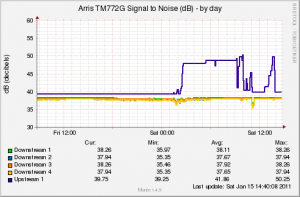This topic may seem like an odd thing to want and try and do, but for the machines I use that have wireless, I don’t want it enabled by default. One is a desktop that just has a wireless network adapter to run Kismet and the other is a work laptop that spends 99% of it’s time with a wired connection plugged in.
While I enjoy the ease of Ubuntu’s ease of configuring wireless, there is actually no easily exposed setting to keep Network Manager from enabling wireless networking when you login. After much digging, I found an answer here, but it’s not very elegant.
If you scroll down to what is currently the second to last post, you’ll find a post by tp42 talking about how to use the dbus-send command to make this happen. The actual command itself is:
dbus-send --system --type=method_call --dest=org.freedesktop.NetworkManager /org/freedesktop/NetworkManager org.freedesktop.DBus.Properties.Set string:org.freedesktop.NetworkManager string:WirelessEnabled variant:boolean:false
The post goes on to detail how to add it into the commands that get run when you log into the default Ubuntu desktop session.
Ideally, this should be a setting you can easily configure so you don’t have to run a command to disable it when you log in, but it does get the job done.
